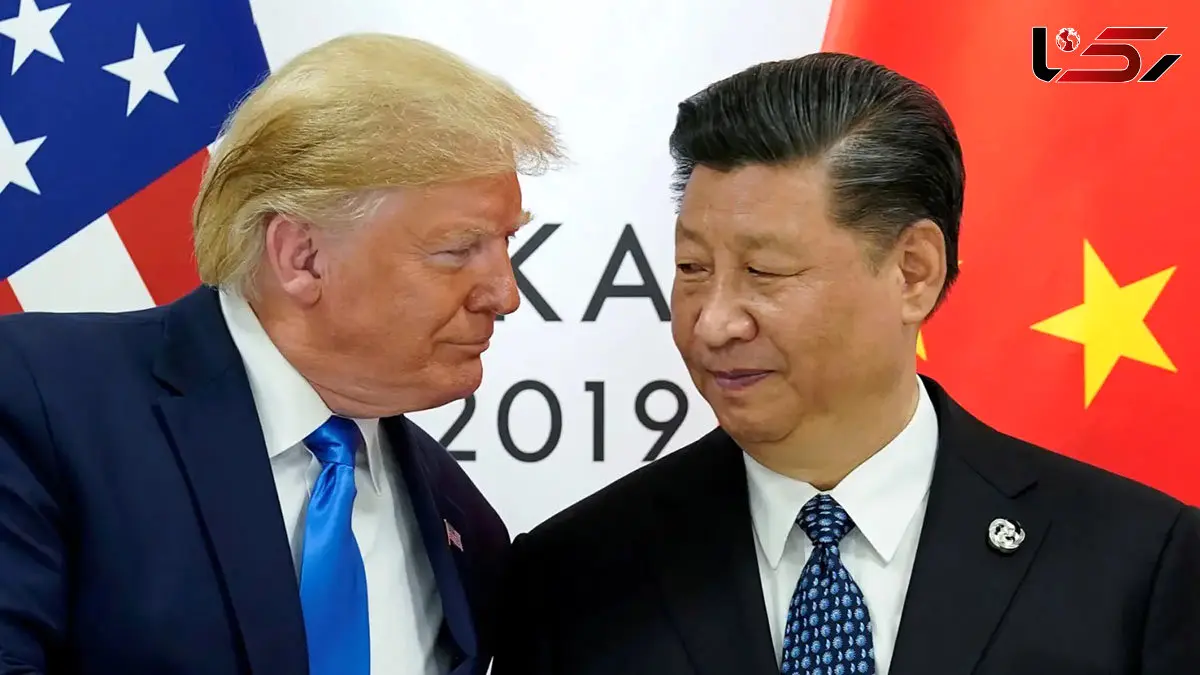Trump and Xi Meeting Could End Months of Global Economic Uncertainty
Rokna Political Desk: Donald Trump and Xi Jinping are set to meet for the first time since 2019, aiming to ease months of global economic uncertainty, with key discussions expected on rare earth minerals, tariffs, and the potential reset of US-China relations.

According to Rokna, citing The Guardian, key topics on the agenda for the US and Chinese leaders include rare earth minerals and tariffs, with a potential opportunity to reset bilateral relations.
Ahead of Thursday’s highly anticipated first meeting between Donald Trump and Xi Jinping since the US president’s return to office, officials from both sides have been negotiating the framework of a trade agreement between Washington and Beijing—an accord that could bring an end to months of global economic turbulence caused by the US-China trade war.
The two leaders have not met in person since 2019. Since then, the war in Ukraine, mounting US concerns about China’s technological progress, and long-standing imbalances in the trade relationship have strained ties between the two powers.
Thursday’s meeting, taking place on the sidelines of the Asia-Pacific Economic Cooperation summit in Seoul, provides an opportunity to reset the relationship.
Speaking to reporters aboard Air Force One on Wednesday, Trump expressed optimism: “I think we’re going to have a great meeting with President Xi of China, and a lot of problems are going to be solved.”
Trump also indicated that the sensitive issue of Taiwan might not be discussed. “I don’t know that we’ll even speak about Taiwan. I’m not sure. He may want to ask about it. There’s not that much to ask about. Taiwan is Taiwan,” he said.
Beijing considers Taiwan a province of China and maintains a multifaceted campaign to pressure the island into accepting what it calls “reunification.” On Wednesday, government officials reiterated that they would “never” rule out using military force if necessary. State media editorials this week further outlined China’s plans for governing Taiwan.
The US remains Taiwan’s most important supporter against Beijing’s pressures, though Trump’s inconsistent stance has led other administration officials to reassure that support will continue.
Rare earth minerals are set to be a key focus of the Xi-Trump talks. China’s dominance over these critical minerals—essential for US industries from automotive to defense—gives Beijing a significant bargaining advantage.
China controls roughly 70% of global rare earth mining and over 90% of processing capacity. This month, Beijing tightened restrictions on rare earth exports and related technologies, citing national security concerns—shortly after the US imposed new limits on advanced semiconductor exports to China.
Preliminary talks in Kuala Lumpur over the weekend suggested Beijing might defer its new export controls for a year, likely in exchange for Washington pausing its new semiconductor restrictions. Such a reciprocal arrangement could benefit both economies, though some US policymakers warn that relaxing chip export limits, aimed at restricting China’s AI research, could pose long-term security risks.
Trump has also been taking steps to reduce US reliance on Chinese rare earths. On Tuesday, he and Japan’s new prime minister, Sanae Takaichi, signed an agreement to secure the mining and processing of rare earths and other minerals, including potential joint stockpiling arrangements.
Japan has been one of the few major economies to actively reduce dependence on China for rare earths, a model many in the US wish to emulate. In 2010, a clash in the East China Sea sparked fears that China might block rare earth exports, disrupting Japan’s manufacturing, particularly in the auto sector. Since then, Japan has cut its dependence on China from 90% to 60%.
China is also working to reduce reliance on the US, signing an upgraded free trade agreement with the ASEAN bloc, its largest trading partner. Last year, China-ASEAN trade totaled $771 billion, compared with $659 billion in US-China trade.
Lingering over the talks is the risk of a global trade war. In April, both sides imposed or threatened tariffs that would have effectively created a trade embargo between the two largest economies. Recently, Trump threatened 100% tariffs on Chinese goods starting in November in response to rare earth restrictions, though this now appears unlikely.
Questions remain about the existing high tariffs, currently paused until a November 10 deadline. As of September 25, the average Chinese tariff on US exports was 32.6%, while the US averaged 57.6% on Chinese goods. In April, tariffs on both sides exceeded 130%.
“Both leaders see themselves and their nations as being in a strong position,” said Bonnie Glaser, managing director of the Indo-Pacific program at the German Marshall Fund. “Still, both want to avoid returning to the very high tariffs threatened earlier this year.”
China’s foreign minister, Wang Yi, spoke with US Secretary of State Marco Rubio on Monday, acknowledging “setbacks” and calling for adherence to “equality, respect, and mutual benefit” in this week’s talks.
Other likely discussion points include fentanyl control and the finalization of the TikTok deal agreed in Madrid.
Beyond specific agreements, the summit’s most significant progress may be demonstrating the potential for constructive dialogue between the world’s two most powerful leaders. Trump has taken a relatively conciliatory tone despite hawkish opposition, while Xi reportedly feels confident in managing Trump at this critical juncture.
Both sides have an interest in cooling tensions. Feng Chucheng, a partner at Hutong Research in Beijing and Shanghai, noted: “There’s a growing recognition in the US that mutually dependent coexistence may be beneficial. In that sense, the US approach toward China is gradually evolving.”
Send Comments